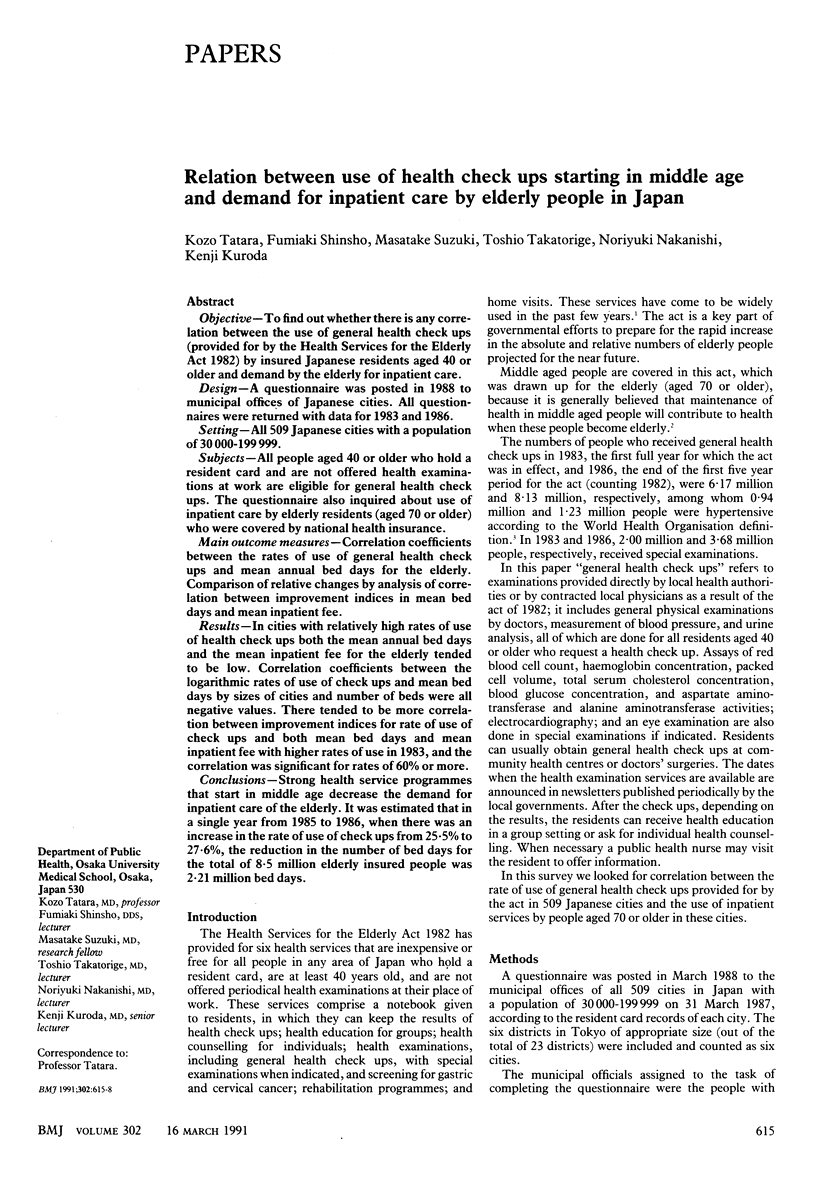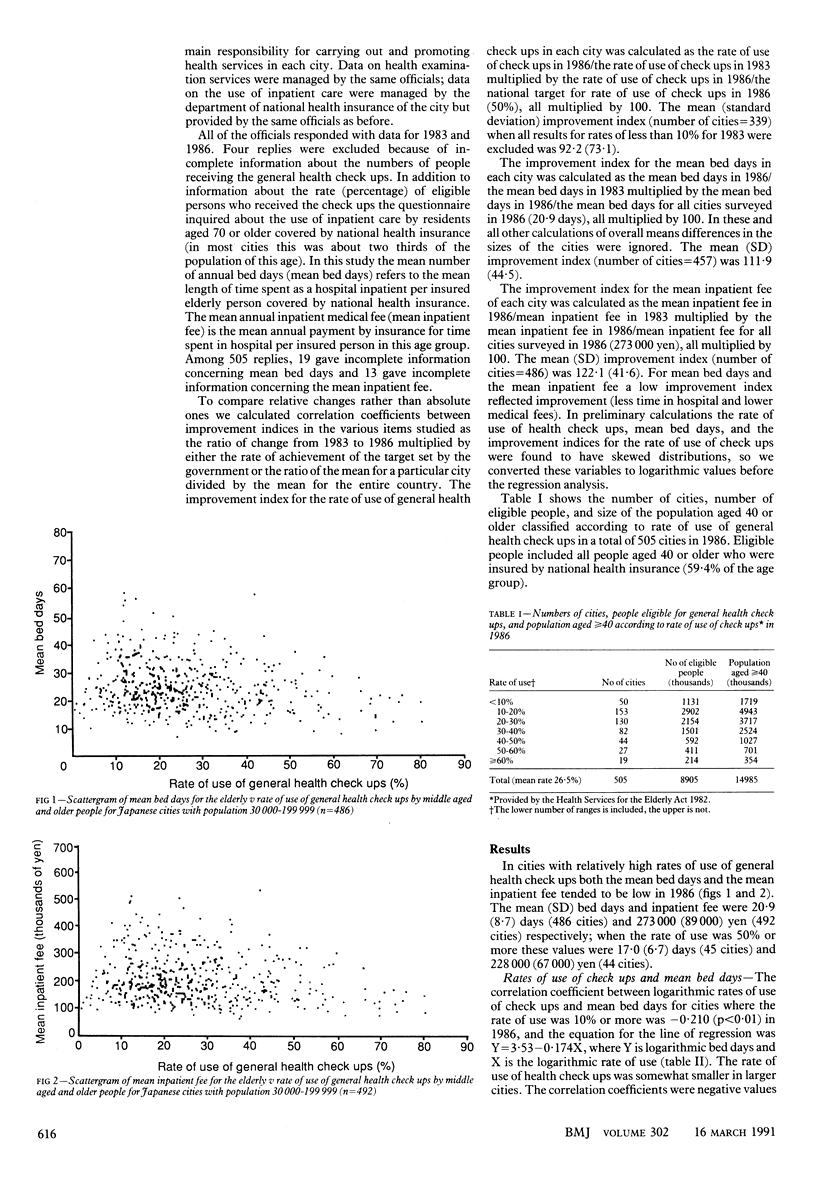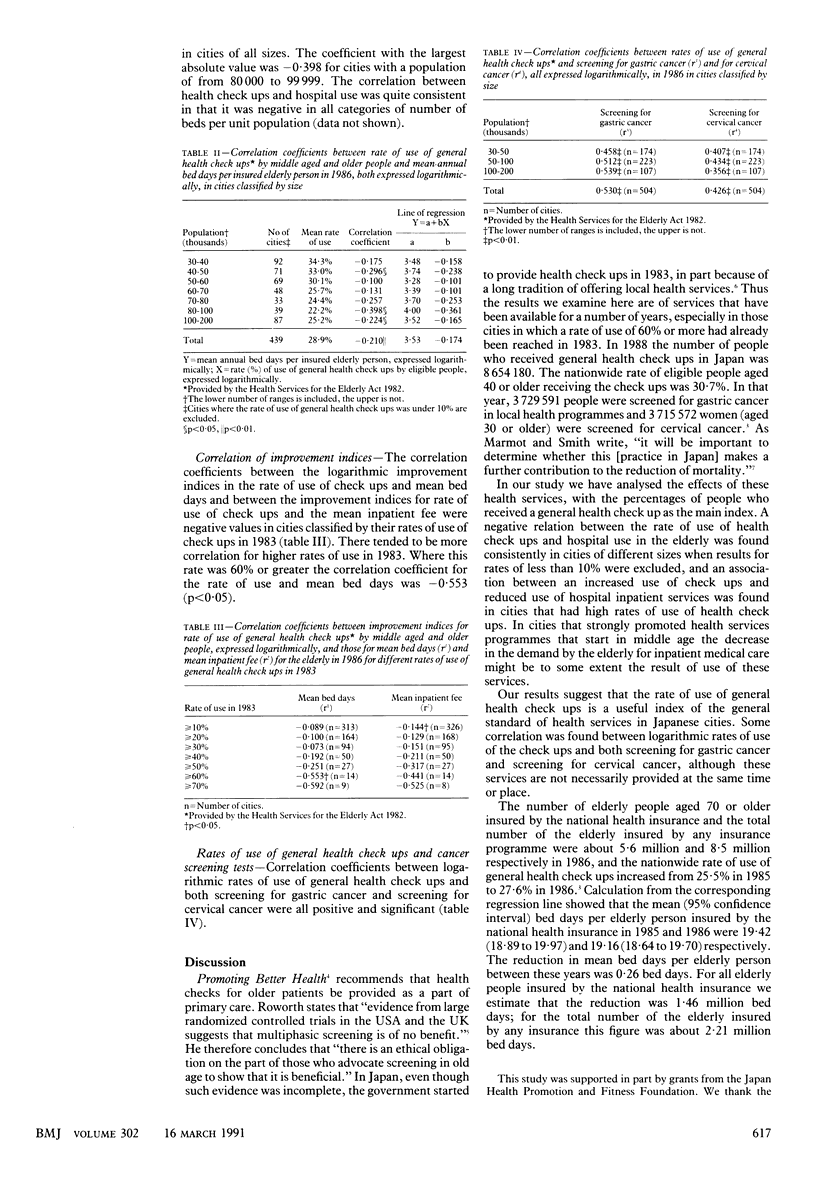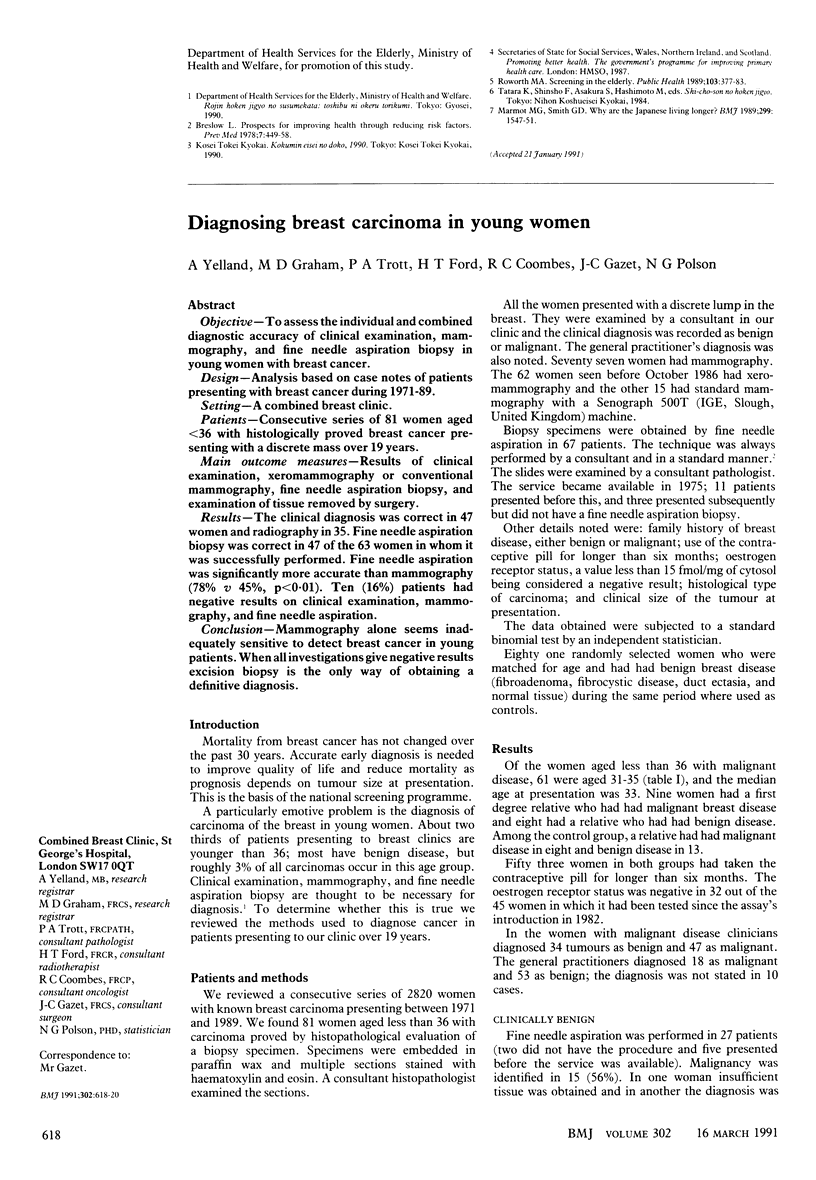Abstract
OBJECTIVE--To find out whether there is any correlation between the use of general health check ups (provided for by the Health Services for the Elderly Act 1982) by insured Japanese residents aged 40 or older and demand by the elderly for inpatient care. DESIGN--A questionnaire was posted in 1988 to municipal offices of Japanese cities. All questionnaires were returned with data for 1983 and 1986. SETTING--All 509 Japanese cities with a population of 30,000-199,999. SUBJECTS--All people aged 40 or older who hold a resident card and are not offered health examinations at work are eligible for general health check ups. The questionnaire also inquired about use of inpatient care by elderly residents (aged 70 or older) who were covered by national health insurance. MAIN OUTCOME MEASURES--Correlation coefficients between the rates of use of general health check ups and mean annual bed days for the elderly. Comparison of relative changes by analysis of correlation between improvement indices in mean bed days and mean inpatient fee. RESULTS--In cities with relatively high rates of use of health check ups both the mean annual bed days and the mean inpatient fee for the elderly tended to be low. Correlation coefficients between the logarithmic rates of use of check ups and mean bed days by sizes of cities and number of beds were all negative values. There tended to be more correlation between improvement indices for rate of use of check ups and both mean bed days and mean inpatient fee with higher rates of use in 1983, and the correlation was significant for rates of 60% or more. CONCLUSIONS--Strong health service programmes that start in middle age decrease the demand for inpatient care of the elderly. It was estimated that in a single year from 1985 to 1986, when there was an increase in the rate of use of check ups from 25.5% to 27.6%, the reduction in the number of bed days for the total of 8.5 million elderly insured people was 2.21 million bed days.
Full text
PDF



Selected References
These references are in PubMed. This may not be the complete list of references from this article.
- Breslow L. Prospects for improving health through reducing risk factors. Prev Med. 1978 Dec;7(4):449–458. doi: 10.1016/0091-7435(78)90255-4. [DOI] [PubMed] [Google Scholar]
- Roworth M. A. Screening in the elderly. Public Health. 1989 Sep;103(5):377–383. doi: 10.1016/s0033-3506(89)80008-3. [DOI] [PubMed] [Google Scholar]


